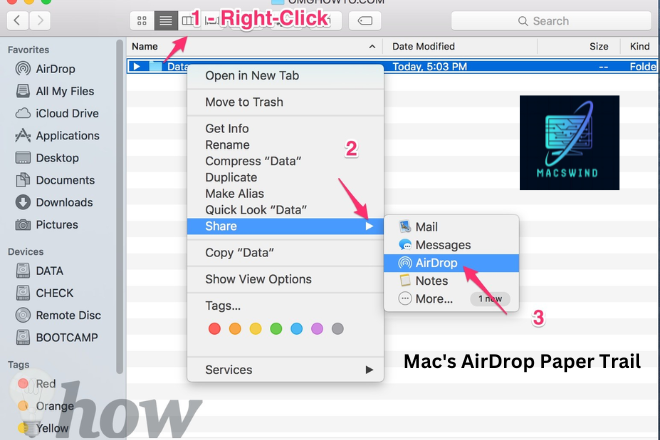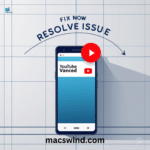In today’s interconnected world, sharing files between our devices has become second nature. For Apple users, tracking your AirDrop history can be important, as AirDrop offers seamless wireless transfer between Apple devices. But have you ever wondered about the files you’ve shared or received? Let’s dive into this digital detective story and uncover the secrets of your AirDrop.
Is it Possible to See AirDrop History?
Before we embark on our quest to see AirDrop history on iPhone and MacBook, let’s address the elephant in the room: Apple’s stance on privacy. The tech giant prides itself on protecting user data, which extends to file-sharing activities.
“Privacy is a fundamental human right. At Apple, it’s also one of our core values.” – Apple’s Privacy Policy
This commitment to privacy means that Apple doesn’t keep a comprehensive log of your AirDrop history on iPhone and MacBook. However, don’t lose hope! While there’s no official AirDrop history on iPhone and MacBook feature, we can piece together your transfer records using some clever detective work.

Read more about Are AirTags Waterproof?
How to See What You’ve Received on AirDrop?
When it comes to files you’ve received via Airdrop on your iPhone, here’s how you can play digital archaeologist:
- Recent Downloads: Check your recent downloads in apps like Files or Photos.
- App-Specific Sleuthing: Look through individual apps where you might have received files.
- Organize as You Go: Create a dedicated folder for Airdropped items to keep track.
Pro Tip: Use the Spotlight search feature to find recently Airdropped files by name or type.
Piecing Together Your AirDrop Sends on iPhone
Tracking what you’ve sent is a bit trickier, but not impossible:
- Photos App: Your visual diary of sent images and videos.
- Files App: Check the “Recants” section for documents you’ve shared.
- Third-Party Apps: Some apps may keep a log of shared items, but this isn’t universal.
Remember: While these methods can help you see what you’ve received on AirDrop, they don’t provide a comprehensive history.
Read No Location Found vs No Location Available
Mac’s AirDrop Paper Trail
Mac users, you’re in luck! Your computer offers a few more breadcrumbs to follow:
- Downloads Folder: Your AirDrop’s default landing zone.
- Sent Items: Use Finder’s search function to locate recently sent files.
- Time Machine: If enabled, this might be your best bet for historical AirDrop data.

Here’s a quick comparison of file location methods on Mac:
| Method | Pros | Cons |
| Downloads Folder | Easy to access | May include non-AirDrop files |
| Finder Search | Can filter by date | Requires manual searching |
| Time Machine | Historical data | Needs to be set up in advance |
AirDrop Destinations:
Where Do Those Files Actually Go?
Understanding where AirDropped files go can help you track your history better:

On iPhone:
- Photos and Videos: Automatically sorted into your Photos app.
- Documents: Usually land in the Files app or relevant default apps on iPhone.
On Mac:
- Downloads Folder: The primary destination for most files.
- App-Specific Locations: Some files may open directly in compatible apps
Case Study: Sarah, a graphic designer, regularly uses AirDrop to transfer files between devices. She created a dedicated “AirDrop Received” folder on her Mac and set her Downloads folder to automatically sort files into it. This simple system allows her to easily track received items without relying on a formal history feature.
Boosting Your AirDrop Game: Privacy and Efficiency
While we’re on the topic of AirDrop, let’s talk about optimizing your experience:
Fine-tuning iPhone Airdrop Settings:
- Go to Settings > General > AirDrop
- Choose from:
- Receiving Off
- Contacts Only
- Everyone
- Mastering Mac’s AirDrop Controls:
- Open Finder > Go > AirDrop
- Click “Allow me to be discovered by” and select your preference
- Remember: Balancing convenience with security is key when you change privacy settings.
Master Mac’s AirDrop controls with our detailed guide. Learn how to customize settings, enhance file sharing efficiency, and troubleshoot issues to ensure smooth and secure transfers across Apple devices
- Open Finder > Go > AirDrop
- Click “Allow me to be discovered by” and select your preference
Remember: Balancing convenience with security is key when you change privacy settings.
Read more about iforgot.apple.com Scam: How to Avoid?
Troubleshooting and Tips
Even the smoothest systems hit snags. Here are some common AirDrop issues and their solutions:
- Files Going MIA:
- Check your storage settings
- Ensure you have enough space
- Verify the file type is supported
- Maximizing Transfer Speeds:
- Keep devices close together
- Ensure both devices are unlocked
- Use the latest iOS/macOS versions
- Security Best Practices:
- Only accept transfers from known contacts
- Regularly update your devices
- Use “Contacts Only” mode in public places
The Future of Airdrop
As we look ahead, what might the future hold for this Apple Airdrop feature?
Explore the evolving landscape of Airdrop technology. Discover upcoming features, potential applications, and how this wireless file-sharing tool may revolutionize data transfer. Learn what’s next for Apple’s Airdrop and similar technologies.
- Enhanced History Features: Apple might introduce a more comprehensive log system.
- Cross-Platform Compatibility: Imagine Air Drop working with non-Apple devices!

While these are speculative, they showcase the potential growth of this iOS feature.
How To See What You’ve Sent on AirDrop?
If you want to find a way to view the files you’ve sent using AirDrop, it’s important to note that AirDrop does not store a history of transferred files. Neither iPhones nor MacBooks keep a record of files shared through AirDrop. As a result, you won’t be able to see or track the files you’ve shared with others.
However, if you can access the recipient’s iPhone or MacBook, you might be able to see the files in their relevant folders within 24 hours, depending on where they saved the received files
Read more about How to Connect Your Android Phone to Your Windows 11 PC
FAQs: Your Burning Air Drop Questions Answered
Let’s address some common queries about Air Drop:
- Can I recover deleted Airdrop files?
- On iPhone: Check Recently Deleted in Photos app
- On Mac: Look in Trash or use Time Machine
- Is there a size limit for Air Drop transfers?
- Technically no, but larger files take longer to transfer
- Can I Air Drop between iPhone and Mac simultaneously?
- Yes, Air Drop supports multiple device transfers
Conclusion: Embracing AirDrop’s Strengths
While a comprehensive Air Drop history might be missing from our Apple gadgets, we’ve uncovered numerous ways to track Air Drop transfers. From checking your Photos app to scouring your Downloads folder, you now have the tools to piece together your Air Drop puzzle.
Remember, the lack of a formal history is a testament to Apple’s commitment to user privacy. By understanding how to locate Air Dropped items and optimize your settings, you can make the most of this powerful file sharing tool.
Whether you’re transferring files between devices or sharing that perfect snapshot, Air Drop remains an indispensable feature in the Apple ecosystem. So go ahead, start dropping those files with confidence, knowing you’ve got the know-how to keep tabs on your digital exchanges.
Key Takeaways:
- While there’s no official Air Drop history, you can track transfers through various methods
- Regular organization of received files can help maintain a personal log
- Balancing privacy settings with convenience is crucial for optimal Air Drop use
- Future updates may bring more comprehensive history features
As technology evolves, so too will our ability to manage and track our digital interactions. Until then, happy Air Dropping!

Anna Zoee is an experienced blogger at Macs Wind, where she shares her expertise on all things Mac-related. With a passion for technology and a knack for simplifying complex topics, Anna delivers insightful content that helps readers get the most out of their devices. Her years of blogging experience make her a trusted voice in the tech community.







